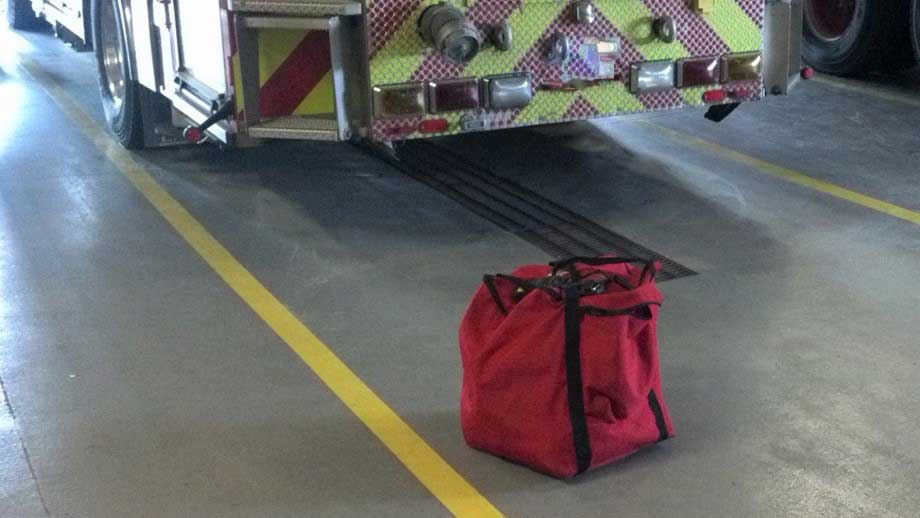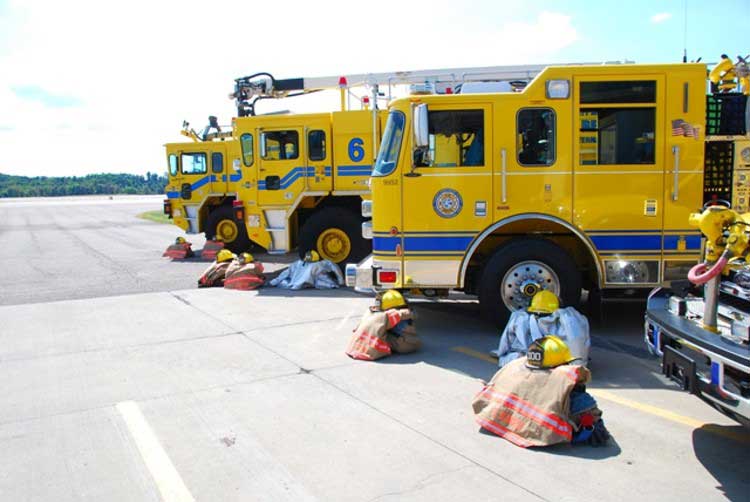Previously we looked the consequences of firefighters not inspecting our personal protective equipment (PPE), which can lead to complacency in the fire station and on the fireground. Is your PPE “combat ready”? Is it fully prepared for use in an emergency response?
The term “combat ready” is a frequently used term that, in this case, denotes how our firefighting PPE should always be—in a readied state. This term is not new to the fire service, but was adapted from the military. Looking at the various types of fire department organizations—full-time, part-time, combination, volunteer—we see how this term applies in different ways to accommodate the operational mode.
So why the readied state for our PPE? It comes down to a matter of time! Firefighters must be efficient and effective at everything that we do, and this includes our response times. Time starts working against us the moment that a person needing help calls 911; the whole chain of events that this sets in motion—being answered by 911, directed off to the appropriate party (police, fire, or EMS), then sent off to the fire station for dispatch—is eating away into the time we need to save lives and property. Our response time starts when the tones are activated for us to respond – this includes the time from when the tone goes off, to it being acknowledged, to the crew getting dressed and ready to go, to the fire truck leaving the station, and then arriving on scene. We can shave off precious seconds with the time it takes to get dressed and ready to leave on the truck. This is where being combat ready comes into play with our PPE.

In photo 1, we can see an example of not being combat ready; the person who owns this gear has decided to roll the dice with respect to a call coming that day. It was reported that this individual came to work that morning, dropped their gear bag behind the truck they were assigned to, and left it there for the entire shift. To really set the example, this was the officer of the truck. As apparent as this example is, it sends the message home: our PPE needs to be in a readied state, not is a relaxed state!

How can we optimize our firefighters preparation time when it comes to our PPE? With regard to full- or part-time staffed departments, it can start with our pants and boots. As you will see in photo 2, this firefighter has their boots and pants stacked by the truck where they are sitting or riding. Their pants and boots are ready for quick donning by having the boots completely exposed at the top. The flash hood is also positioned for quick donning, as it seems to be the first step that they will perform to get dressed. Notice that the boots are outside of the truck and on the floor–when they are inside the truck, it will add a few more seconds to get them out.

Another example is in photo 3. Here you can see both the pants and boots readied in various spots on the tarmac in relation to where each person is assigned. In addition to the flash hood, the helmet of each firefighter is also positioned on top of the boots. You will also notice that all the firefighters have their jackets also positioned by the boots and pants. Some of the jackets pictured are ARFF PPE with a silver outer shell, with the others being regular structural firefighting gear. This airport fire department is in a readied state for response which is crucial for both airplane passengers and for meeting aviation regulations.

In photo 4, we can see the inside of the fire truck and one example of how we can set up our other pieces of equipment for readiness. With the portable radio, you can see how it is set in the radio strap and laid around the bottom seat cushion for donning. This seems to be a sequential pattern of donning before the self-contained breathing apparatus (SCBA) goes on the firefighter.
The SCBA has also been readied by having the face piece attached to the actual SCBA and the shoulder straps positioned for receivership. The SCBA needs to be readied by having all the straps extended for easier donning. The shoulder straps can then be opened up and wrapped around the head/shoulder portion of the seat to maintain their openness for the firefighter to don when seated. If it is equipped with a sliding lumbar pad, it too needs to be adjusted for the firefighter, based on their height. Notice also how the firefighter has their helmet positioned right by the seat for quick access and donning.
In terms of a volunteer fire department, the same principles also apply. Some departments do have duty crews that are responsible for every call that comes in that night or day, so this would allow the firefighter to position their gear by the truck inside the station. If the department does not have assigned duty nights, then the gear locker is where the firefighter should focus on organizing and making the gear ready for quick access. The SCBA on the trucks can still be readied as described above but without the face piece (unless the department shares the face pieces, in which case they can then be attached to the SCBA). Ensure that the cylinder is full.
As mundane as all this sounds, these small steps that can be taken ahead of time will allow us to be efficient with our operations, starting with response times, and can save seconds down the road when it matters most.

Mark van der Feyst has been in the fire service since 1999 and is a firefighter with the Fort Gratiot (MI) Fire Department. He is an international instructor teaching in Canada, the United States, and India, and at FDIC. He is also the lead author of Residential Fire Rescue (Fire Engineering Books & Video). He can be contacted at Mark@FireStarTraining.com.

